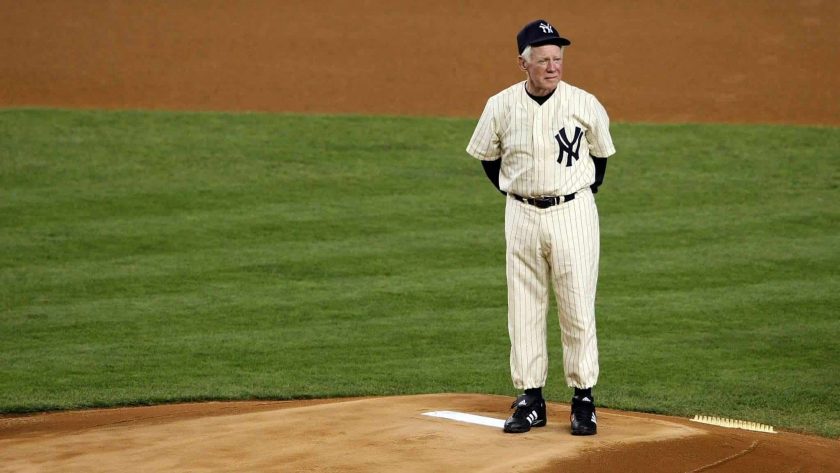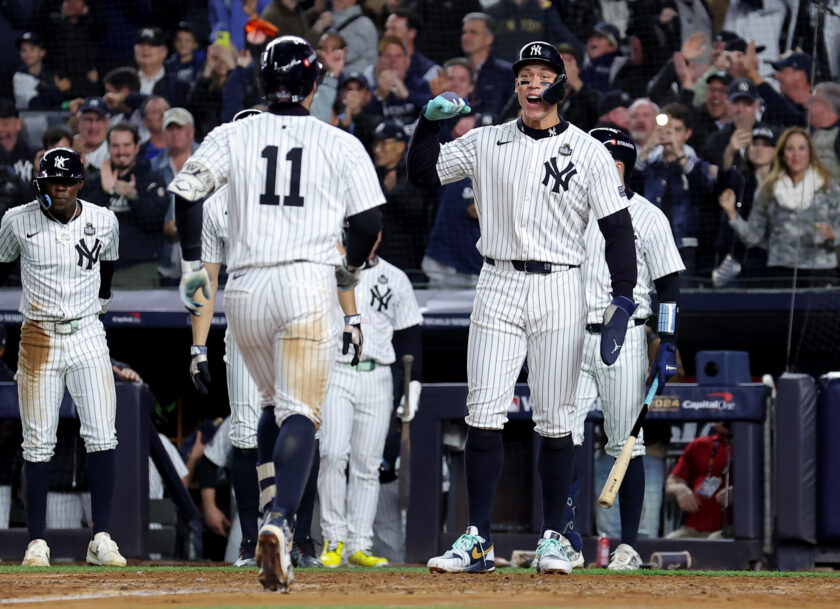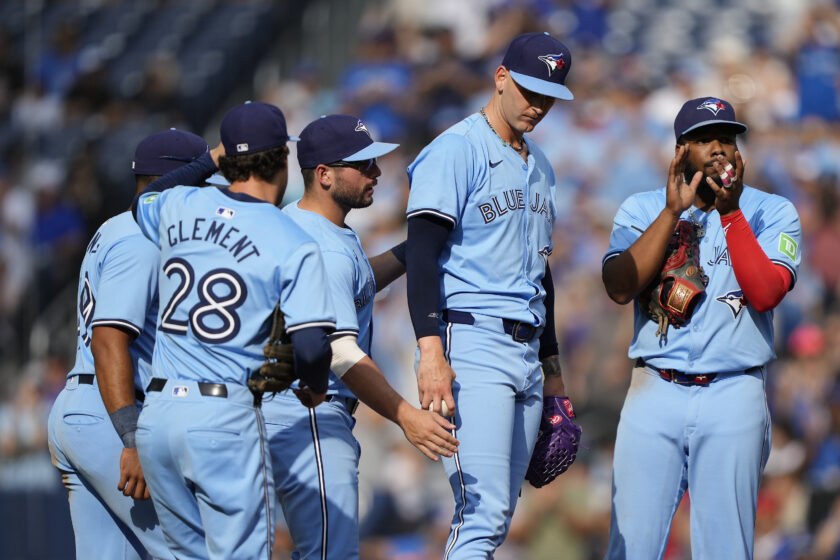Remembering the New York Sports stars who served in the military

Memorial Day is a day of remembrance for those who fought and died for the USA. This is in honor of the New York sports stars who fought for their country.
[sc name=”kyle-newman-banner” ]It’s come time to honor some of New York sports’ finest soldiers. A number of athletes that New York sports fans have come to know and love served their country dutifully in one way or another. This Memorial Day I think it’s time that these heroes be remembered for the work they did off the field.
If I missed any athletes who served please put them and their stories in the comments below.
Willie Mays, OF, New York Giants and New York Mets
Willie Mays is one of the greatest outfielders in the history of baseball. A Hall of Famer and a legend in New York sports.
He was also drafted to serve in the U.S. Army to fight in the Korean War. Mays was sent to Fort Eustis in Newport News, VA. He spent much of his free time on base playing baseball with his fellow soldiers.
Mays even credits his famous basket catch to his time on the base. He credits his fellow soldier Al Fortunato, who Mays said taught him how to do it.
Ed Figueroa, RHP, New York Yankees
Ed Figueroa was part of the magical 1970s New York Yankees. The team won two World Series during Figueroa’s tenure.
Aside from being a World Series champion, Figueroa was also a veteran. The New York Mets cut Figueroa due to an arm injury in 1968 and he went to serve in the Marines. Figueroa fought in Vietnam in 1969 and was honorably discharged in 1970.
He would make his MLB debut four years later with the California Angels.
Nolan Ryan, RHP, New York Mets
Nolan Ryan will always be the one that got away. One of the greatest pitchers in MLB began his career with the Mets but was traded in one of the worst deals in franchise history.
The Hall of Fame pitcher was also a hero off the field. Ryan was drafted in 1966 and spent six months with the U.S. Army Reserve in 1967. He would rejoin the team by the end of the 1967 season and played his first full season in the majors in 1968.
Gil Hodges, 1B/manager, Brooklyn Dodgers and New York Mets
Gil Hodges is an important figure in New York sports history. He was a legendary first baseman making eight All-Star teams and winning two World Series with the Dodgers.
Even more impactful was his time with the New York Mets. He led the Amazins’ to there first World Series in 1969. A miracle mark that will never be forgotten.
Hodges was also a Marine. He was called into action in 1943 and fought in World War II. He fought in the battles of Tinian and Okinawa. Hodges was awarded a Bronze Star and a Combat Action Ribbon for his bravery and service to the country.
He was discharged in 1946 and returned to baseball in 1947.
Whitey Ford, LHP, New York Yankees
Whitey Ford is a Hall of Fame pitcher and a legend. A six-time World Series champion, a 10-time All-Star, and a Cy Young winner.
Ford was more than just a spectacle on the field. The legendary lefty was also a soldier in the U.S. Army. He served for two years in Korea. He rejoined the New York Yankees in 1953 and would be inducted into the Hall of Fame 21 years later.
Don Larsen, RHP, New York Yankees
Don Larsen won two World Series with the Yankees. He’s best known for throwing a perfect game in Game 5 of the 1956 World Series.
Before that, Larsen was a member of the U.S. Army. He was drafted in 1951 and served two years in non-combat jobs. He was discharged in 1953 and promptly joined the St. Louis Browns roster.
Tom Seaver, RHP, New York Mets
Tom Seaver is one of the greatest to ever play the game. “The Franchise” won three Cy Young Awards, one World Series, and was named an All-Star 12 times.
Before all of that Tom “Terrific” was a Marine. Seaver joined the Marines right out of high school in 1962. He served at AIRFMFPAC 29 Palms, CA for six months. After being discharged in 1963 Seaver enrolled at Fresno City College and began his baseball career.
Pee Wee Reese, SS, Brooklyn Dodgers
Pee Wee Reese will always be remembered for the role he played in Jackie Robinson breaking the color barrier. A legend on and off the field in the baseball world. The Hall of Famer made 10 All-Star teams and won two World Series.
Reese was also a soldier in the U.S. Navy. He enlisted in the Navy in 1943 and served in the Pacific during World War II. Reese returned in 1946 and continued to be a hero for freedom and the American People.
Jackie Robinson, 2B, Brooklyn Dodgers
Jackie Robinson will always be remembered as the player who broke the color barrier. He was a hero across the country for becoming the first African-American baseball player. the Hall of Famer was a six-time All-Star, a World Series Champion, and a NL MVP.
Before Robinson could break the color barrier he was a soldier in the U.S. Army. Robinson was drafted in 1942 and placed in a segregated unit. He would later be accepted to Officer School and was made a Second Lieutenant.
Robinson was court-martialed in 1944 for refusing to sit in the back of a military bus. He was acquitted by an all-white jury of his fellow officers, but he still felt the pain. Due to the court-martial, Robinson was not deployed with his unit, the 761st “Black Panthers” tank battalion. It was the first all African-American tank unit in American history.
Robinson was honorably discharged in 1944 and began his baseball career with Kansas City Monarchs in 1945.
Warren Spahn, LHP, New York Mets
Warren Spahn is a Hall of Famer and a legend for his longevity. The lefty played an incredible 21 years, including for the Mets in 1965. Spahn made 17 All-Star teams, won a Cy Young, and a World Series.
After making his major league debut in 1942 Spahn quickly enlisted to serve in the U.S. Army. Spahn became a combat engineer and served at the Battle of the Bulge and the Battle of Remagen and the capture of Ludendorff Bridge. Spahn earned a Purple Heart and a Bronze Star.
Hank Bauer, OF, New York Yankees
Hank Bauer will be remembered as a member of the legendary Yankees of the 1940s and 1950s. He won eight World Series titles, and was named to three All-Star teams along the way.
Before Bauer was a Yankee he was a Marine. Bauer enlisted with the Marines one month after the attack on Pearl Harbor. Bauer served with the Fourth Raider Battalion, and G Company Second Battalion.
He earned two Bronze Stars, two Purple Hearts, 11 Campaign Ribbons, and a commendation medal during his service. He fought in the Battle of Guadalcanal where he contracted malaria, the Battle of Guam, and the Battle of Okinawa where he was the Sargeant of 64 Marines only six of whom survived. His service came to an end when he was discharged after his thigh was injured by shrapnel in Okinawa.
He was set to become a pipefitter after the war, but after meeting Yankees scout Danny Menendez at a bar he got a tryout. The rest is history.
Bill Bradley, SG/SF, New York Knicks
Bill Bradley is a Hall of Famer and one of the greatest Knicks ever. Bradley won two NBA Championships and was named to an All-Star team in 1973.
Before Bradley joined the Knicks he was a member of the U.S. Air Force. Two months prior to graduating from Oxford with a Master’s degree in Politics, Philosophy, and Economics Bradley enlisted in the Air Force reserves. He served six months of active duty as an officer and was discharged. He joined the Knicks in December in 1967 and Oxford allowed Bradley to take special exams to graduate in 1968.
Bradley continued to serve the country after his basketball career came to an end. He was a Senator from New Jersey from 1979 to 1997.
Yogi Berra, C/Manager, New York Yankees and New York Mets
Yogi Berra is one of the most recognizable figures in New York sports history. From his time as a player that earned him a spot in the Hall of Fame to his time as a manager leading to the Mets to a NL pennant in 1973. Nobody will ever forget the many Yogisms that have become a huge part of the game today.
Before he was Yogi Berra the athlete, he was Lawrence Berra of the U.S. Navy. Berra served as a gunner’s mate on the USS Bayfield and fought at Normandy on D-Day. Berra was awarded a Purple Heart after being injured in battle during his service.
He played for the Newark Bears upon his return and was mentored by Hall of Fame catcher Bill Dickey.
Joe DiMaggio, OF, New York Yankees
Joe DiMaggio is one of the greatest of all time. There isn’t a New York Sports fan alive who doesn’t know who Joe Dimaggio is. The Yankees’ legend won a staggering nine World Series titles, was named to 13 All-Star teams, and won three MVP awards. The Hall of Famer also set the MLB record with a 56 game hitting streak.
As amazing as it is to think, DiMaggio’s career could have been even better. He missed a chunk of his career in the middle of his prime to fight as a soldier in the U.S. Air Force.
DiMaggio enlisted in 1943 and quickly became a Sargeant. He served in a non-combat capacity as a physical education instructor. DiMaggio served in Santa Ana, HI, and Atlantic City. He was medically discharged in 1945 with stomach ulcers.
That’s the good story of DiMaggio’s service. The real story is that DiMaggio got preferential treatment. The Yankees star had life as good as it gets on base. He played baseball, got special privileges, ate so well that he gained 10 pounds, and spent most of his deployment in Hawaii on the beach tanning and drinking.
For his part, DiMaggio was disgusted by his own actions and asked to be deployed in combat, but his request was denied.
DiMaggio’s parents were also classified as “enemy aliens.” The Italian DiMaggio family was not allowed to travel more than five miles from their house without a permit. DiMaggio also had his fishing boat seized.
Jerry Coleman, 2B/Broadcaster, New York Yankees
Coleman is better known for his broadcasting career than his time with the Yankees. The Hall of Fame broadcaster called Yankees games from 1963-1969. He called national broadcasts in the regular seasons and playoffs for CBS Radio from the mid-1970s to 1997. Coleman also won four World Series, and was named an All-Star in 1950.
Before all of that Coleman was a Marine. He served in World War II and the Korean War as an aviator, he reached the rank of Lieutenant Colonel. Coleman is the only MLB player to ever see combat in two wars.
Coleman flew 120 combat missions across the two wars. He was awarded the Distinguished Flying Cross twice and 13 Air Medals for his service.
Ralph Kiner, Broadcaster, New York Mets
Ralph Kiner is a Hall of Fame player in his own right, but New York sports fans will always remember him for his time as a New York Mets broadcaster. He called Mets games from their debut season in 1962 until 2005. His 53-year career as a broadcaster is the third-longest tenure in MLB history.
Kiner was a pilot in the U.S. Navy before he was a baseball player. He served with the 99th patrol squadron in the Pacific during World War II.
Jack Lummus, End (WR), New York Giants
Lummus wasn’t a star on the field. He signed a rookie contract in 1941 and played in just nine games for the Giants. He made one catch for five yards. That’s the extent of his career. New York Sports fans could be forgiven for not knowing who he is. So why is he on this list?
Lummus was a decorated member of the military who gave his life fighting in World War II. Lummus enlisted with the U.S. Marines in 1942. He was sent out to Mare Island as a Military Policeman in May, and by August he was a Corporal. In October he applied to Officer School, and in December he was a Second Lieutenant.
He was assigned to the Marine Raiders and then the 27th Marines, Fifth Division. In 1944 he was assigned to be the Executive Officer of Company F, Second Battalion, 27th Marines. After four months of training the unit was deployed to fight at the Battle of Iwo Jima.
Lummus’ unit was in the first wave of the battle. Lummus took out three enemy strongholds by himself. On his way to return to his platoon, Lummus stepped on a land mine. Lummus famously told his doctor, Thomas M. Brown, “doc, the New York Giants lost a mighty good end today.” Lummus died on the operating table.
He was awarded a Purple Heart and the Medal of Honor for his service.
A contributor here at elitesportsny.com. I'm a former graduate student at Loyola University Chicago here I earned my MA in History. I'm an avid Mets, Jets, Knicks, and Rangers fan. I am also a prodigious prospect nerd and do in-depth statistical analysis.






